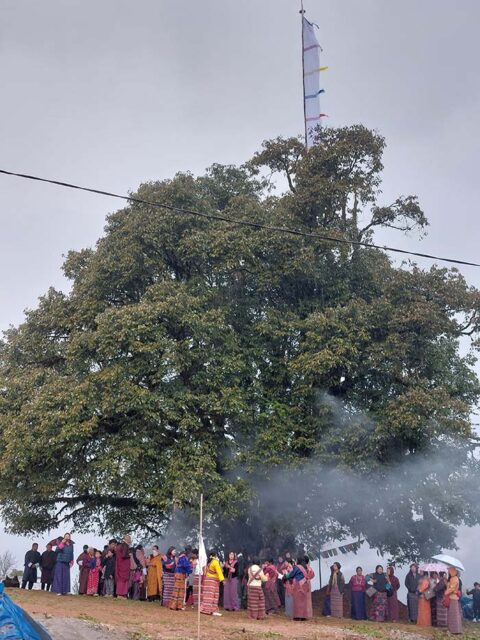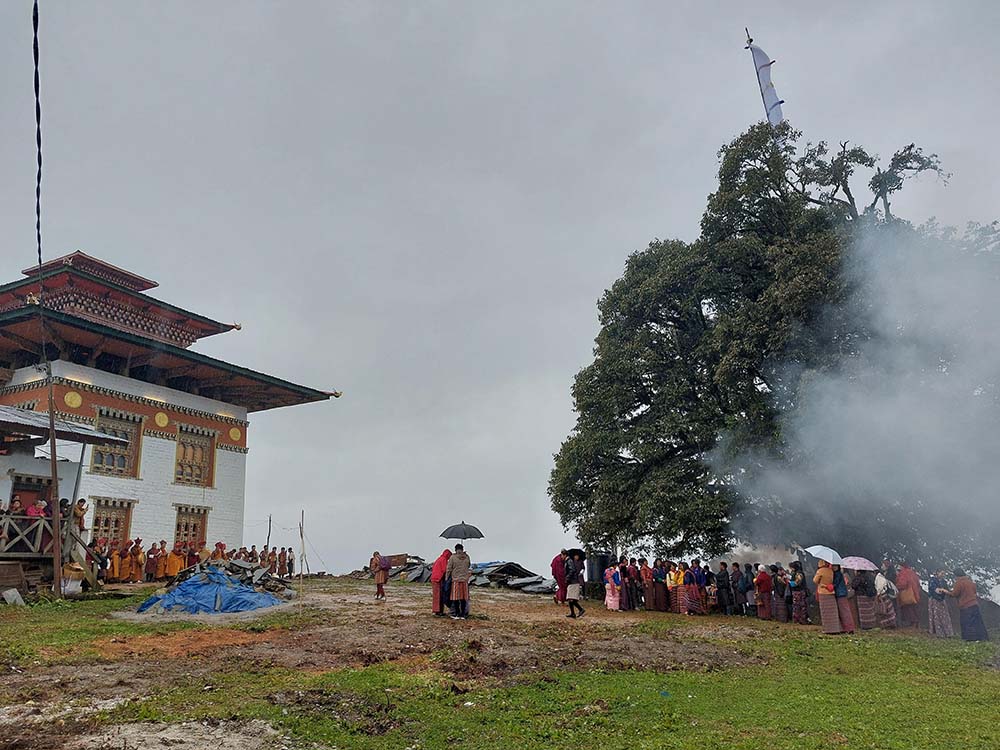Chencho Dema
Punakha—Every year, the people of Draagchhukha and Sedchena in Goenshari, along with some from Kabesa in the upper Punakha valley, come together for a special day-long celebration at Nangsoel Goenpa. This event pays tribute to their local deity, Thangkab. Situated approximately 34 kilometre from Khuruthang town, the monastery serves as the focal point for this unique gathering.
Thangkab, a male local deity, is deeply intertwined with the well-being of the village and Nangsoel Monastery. This year, the ritual took place on March 24.
Every year, locals gather for the deity propitiation ceremony in the village. It is believed that attendance is crucial, as failure to participate may lead to sickness.
Thangkab was appeased at the base of an ancient Thom Shing, an oak tree, beside the monastery.
The designated “deity tree,” a massive and twisted Thom Shing, has not only been integral to the annual ritual for over 750 years but also predates the construction of Nangsoel Goenpa.

The locals gather around the tree hoisting flags and perform dances
As part of the community’s customs, a selected man from the village climbs to the top of the tree and raises a prayer flag among the branches, its upper part visible from the outside.
Meanwhile, a group of monks, their robes swaying in harmony, conducts the ritual facing an altar of offerings set up at the base of the tree, the entire village participates, singing, dancing, and laughing, contributing to the joyous atmosphere of the celebration.
The tree it divides into two main sections at its branches: one side thrives with leaves while the other remains bare. Interestingly, this pattern alternates between the two sides each season.
Goenshari Gup, Wangchuk Dorji, said that if any branches of the tree were broken, regardless of their direction, they would bring bad luck and illness to the residents of that specific area.
Tshering Dorji, a 47-year-old from Sedchena village, has been attending the ritual without fail since his childhood days. “I will attend the ritual next year, too.”
According to Wangchuk Dorji, Drupthob Barawa (1310-1391), founder of the Barawa Kagyu, visited the monastery and placed his walking cane on the spot where the tree now stands.


